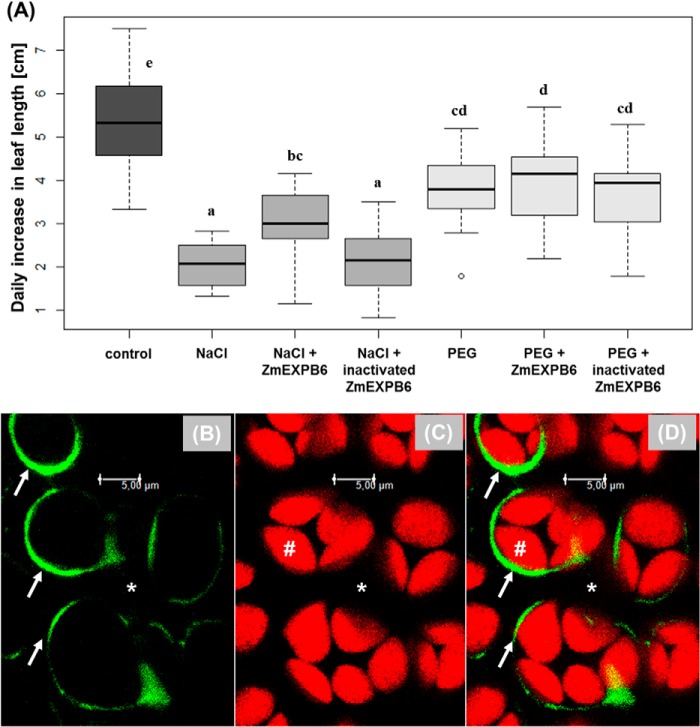FIGURE 7.
Growth-mediating effects of exogenously applied ZmEXPB6. A, daily length growth of salt-stressed (100 mm NaCl) and osmotic-stressed (22.5 mm PEG 6000) leaves in response to exogenous application of recombinant ZmEXPB6. Stressed plants were divided into the following groups: NaCl- or PEG-treated plants plus exogenous application of heterologous ZmEXPB6; NaCl- or PEG-treated plants plus exogenous application of heat-inactivated heterologous ZmEXPB6; NaCl- or PEG-treated plants without exogenous application of heterologous ZmEXPB6. Control-treated plants were cultivated without NaCl or PEG. The exogenously application was carried out by brushing the ZmEXPB6-containing solution onto the adaxial- and abaxial leaf sides. To keep conditions identical, plants that were not treated with exogenously added expansin were wetted with the identical quantity of brushing solution. Leaf application treatment was repeated on four consecutive days and averaged. Statistical significance (p ≤ 0.01) is indicated by letters (all-pair comparison according to Tukey (45)). Confocal images in b–d show the adaxial view on the leaf apoplast. B, exogenously applied Alexa Fluor 488 goat anti-chicken IgG antibody at 3 h after leaf surface application appears as a green ring labeled by white arrows. C, identical details show autofluorescence of the palisade cell chloroplasts in red, #. D, overlay of B and C. The overlay demonstrates that the fluorescently labeled and exogenously applied protein can enter the apoplast and appears as a ring surrounding the palisade cell walls. *, apoplastic space.

